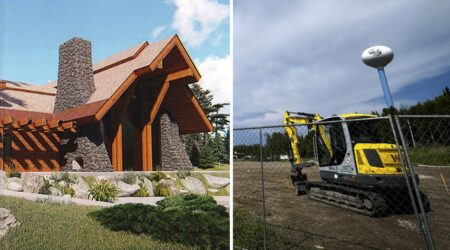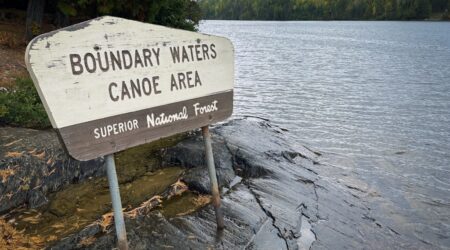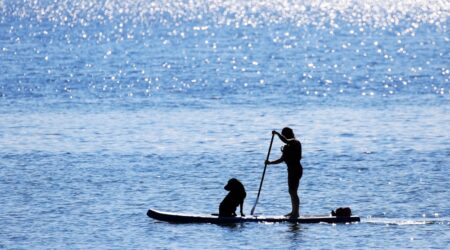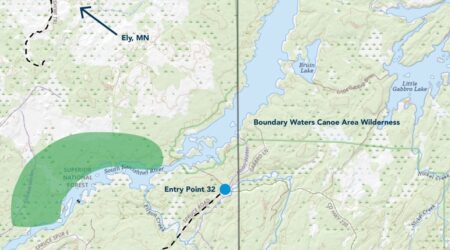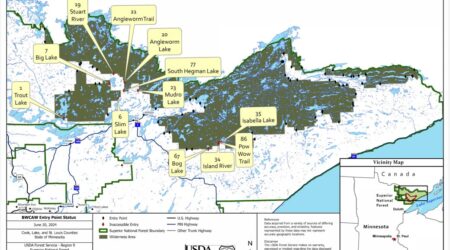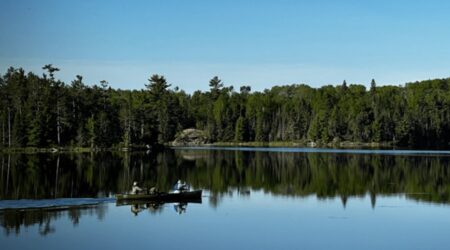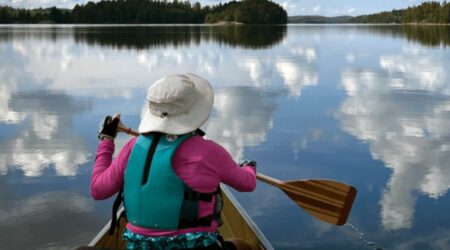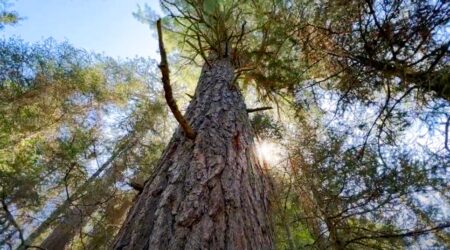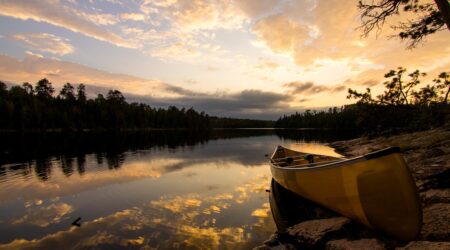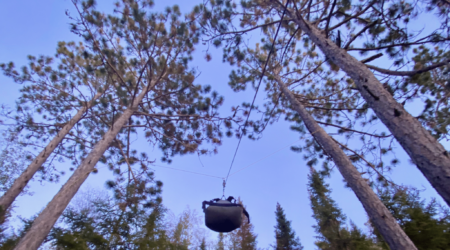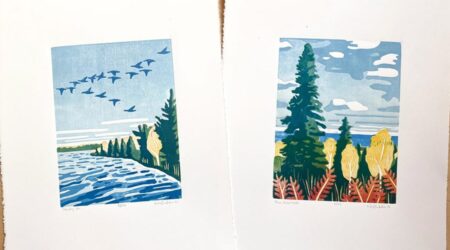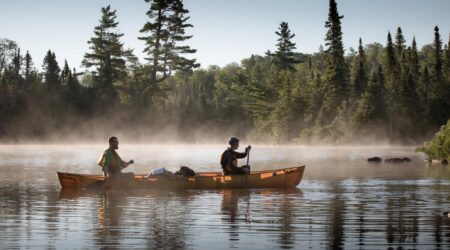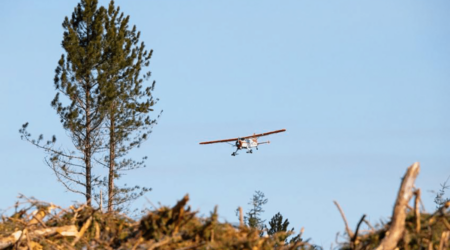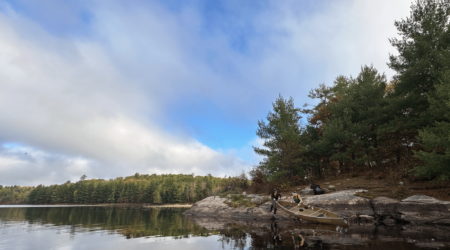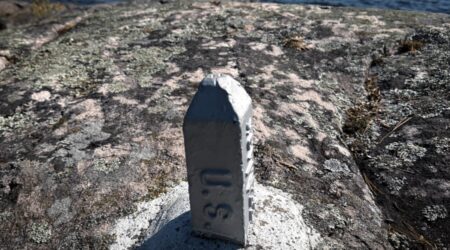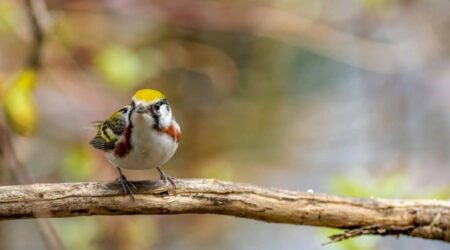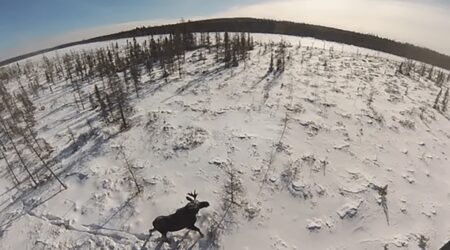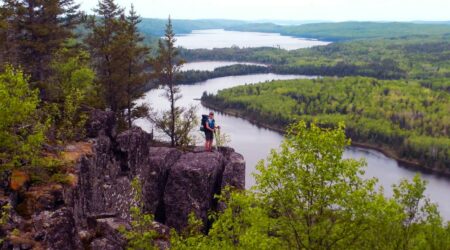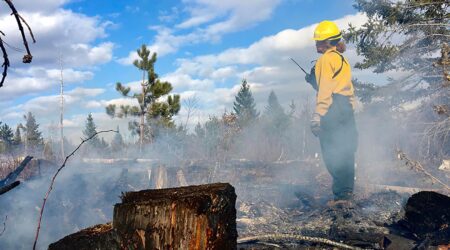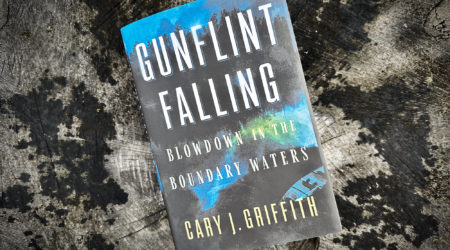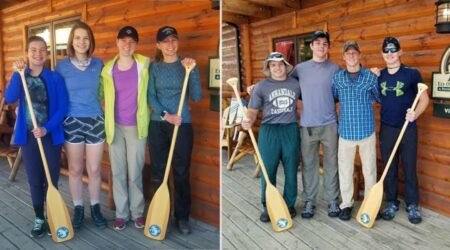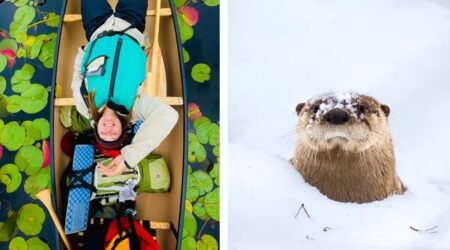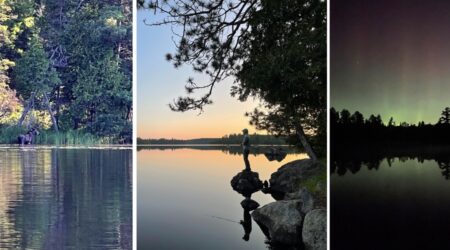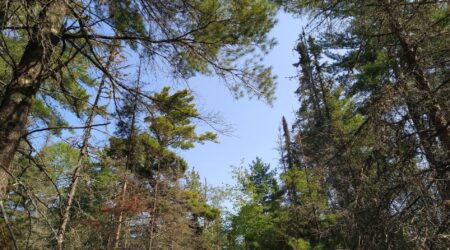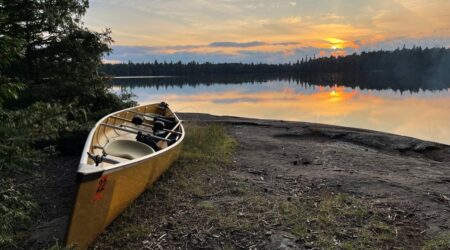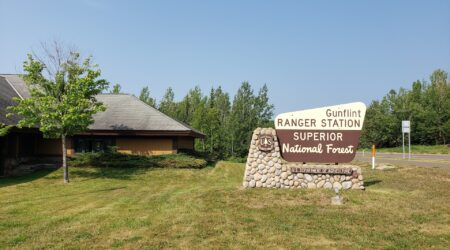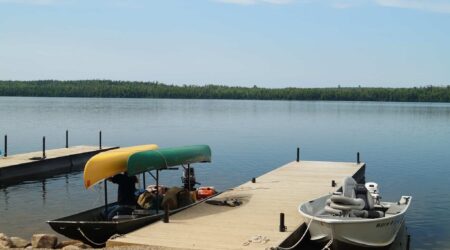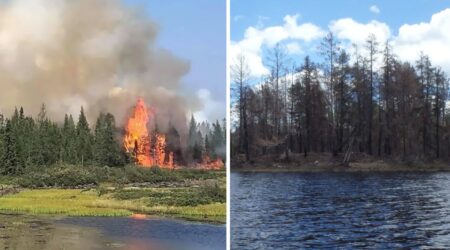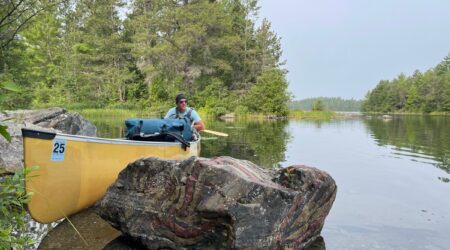The Boundary Waters Canoe Area Wilderness (BWCAW) covers 1 million acres with over 1,100 lakes along 150 miles of the Minnesota-Canada border. Get the latest news on BWCA regulations, the mining debate, wildlife, trail conditions, camping permits and more.
New hub in Ely for hiking and multi-use trail enthusiasts
The Ely Economic Development Authority is constructing a new trailhead complex just west of Ely, Minnesota. The facility will serve as a trailhead hub for the Taconite Snowmobile Trail, Prospectors Loop ATV Trail, Mesabi Trail, and eventually, the North Country Scenic Trail.
USFS to purchase 80,000 acres from the DNR within the BWCAW
State and federal agencies are collaborating to transfer 80,000 acres within the BWCAW to the federal government. “School Trust Lands” originally aimed to provide long-term revenue for Minnesota’s public schools, but wilderness protection measures have limited their ability to generate sufficient income. Groups see the move as a win both for wilderness and for public schools.
5 best places for stand-up paddleboarding in Northeast Minnesota
With 11,842 lakes and 69,200 miles of rivers and streams, it’s not hard to find somewhere to go stand-up paddleboarding in Minnesota. But in my opinion, the very best place to paddle is northeast Minnesota.
Advocacy group purchases land near the BWCAW
Friends of the Boundary Waters Wilderness recently purchased 361 acres of land along the South Kawishiwi River. This scenic river borders the Boundary Waters Canoe Area Wilderness and is considered one of America’s most endangered rivers.
Foraging wild edibles in the Superior National Forest
Berry-picking season has arrived! You can find all kinds of berries and mushrooms within the Superior National Forest and BWCAW. Foraging wild edibles is a highlight of summer adventures, connecting people to the land while adding flavor to camp meals.
Some BWCAW entry points closed due to storm damage
Heavy rainfall from severe thunderstorms caused extensive damage to roads and flooding within the Superior National Forest (SNF), including the Boundary Waters Canoe Area Wilderness (BWCAW). In response, the USFS – Superior National Forest has closed several entry points. As a result, individuals with BWCAW permits reserved through June 22, 2024, are being notified directly of the cancellation and refunded.
Proposed amendments aim to overturn the 20-year mining ban
Last week, Representative Pete Stauber attached five amendments to the National Defense Authorization Act. These aim to overturn the 20-year mining ban near the Boundary Waters Canoe Area Wilderness (BWCAW). While four of those amendments were defeated, one remains under review.
Should life jackets be required in the BWCA?
Recent incidents in the BWCAW have resurfaced a long debate about whether people should be required to wear personal flotation devices…
Elder trees of the BWCA may not survive climate change
The oldest known tree in Minnesota grows in the Boundary Waters, estimated to be over 1,000 years old and informally known as the “Legacy Cedar.” Although past logging practices obliterated numerous trees, remnants of these ancient giants still linger in isolated pockets within the wilderness. Forest managers now consider their vulnerability to warming climate conditions.
New BWCAW Collaborative promotes shared learning with the USFS
The Superior National Forest and stakeholders who care about the BWCA collaborate on topics including forest stewardship, visitor use, fire management, impacts and restrictions…
Everything you need to know about the new BWCA food storage order
The USFS has updated the regulations concerning food storage in the Boundary Waters Canoe Area Wilderness. Hanging items in a tree or using approved bear-resistant containers has been a part of the regulations and rules, and now violations can bring penalties. Learn how to hang a food pack from a tree and travel safely through bear habitat.
Nan Onkka: inspired by Lake Superior and the Boundary Waters
Grand Marais printmaker Nan Onkka finds inspiration in the northwoods: “The beauty, the rawness, the timelessness of the wilderness is so totally different from agricultural landscapes or urban recreational areas. I think everyone deserves the chance to experience that, and I hope that we are able to continue to protect the waters and the woods of these wild places.”
U.S. House backs Rep. Stauber’s effort to reverse 20-year mining ban
A bill that could reverse the 20-year ban on mining leases near the Boundary Waters Canoe Area (BWCA) passed the U.S. House. It will soon move on to the Senate. Environmental advocates express concern over the reversal of mining leases that could impact watersheds in the region.
After the Greenwood Fire: reseeding the forest
This spring, the USFS conducted aerial reseeding over hundreds of acres as part of ongoing efforts to restore a previously pristine area. The Greenwood Fire burned over 26,000 acres in the Superior National Forest (SNF) and earned the title of the most extreme wildfire event of 2021.
Biden administration builds on historic efforts toward clean water
The administration recently announced a goal to protect 30 percent of lands and waters throughout the United States by 2030. This includes protection from mining impacts near wilderness areas such as the Boundary Waters Canoe Area (BWCA).
How is the international border marked in the BWCA?
Along the northern edge of the Boundary Waters Canoe Area Wilderness (BWCA) lies an invisible line. The international border stretches over 150 miles of water trail, following the shorelines of Quetico Provincial Park to the north and the BWCA to the south. Careful observers may notice the subtle demarcation of the international boundary as they paddle by. Short metal reference markers are punched firmly into hard granite rock.
Haven for birds and birders: Superior National Forest an Important Bird Area
Springtime marks the return of migratory birds to northern Minnesota. In 2003, the Superior National Forest was listed under the National Audubon Society’s Important Bird Area Program. Encompassing 3,900,000 acres, the forest shelters the largest number of nesting birds of any national forest.
Minnesota DNR survey indicates stable moose population
Minnesota’s moose population continues to be stable, according to a recent survey. Learn more about the findings from the MNDNR report and the ongoing conservation efforts in the Boundary Waters Canoe Area.
Advocates aim to save historic BWCA hiking trails
Boundary Waters Heritage Trails is a new non-profit with the expressed interest in promoting and preserving historic trails within the BWCAW.
Minnesota’s dry winter sparks concerns for spring wildfires
Wildfire is a normal part of healthy ecosystems in the Superior National Forest. However, USFS personnel are warning that this spring could see a higher incidence of wildfires due to low snow cover and precipitation. As a result, they encourage those who live and recreate in the Quetico Superior region to be watchful.
Book Review: Gunflint Falling by Cary J. Griffith
On July 4, 1999, the sky fell. Or so it seemed. On that day the Boundary Waters Canoe Area Wilderness was hit by a historic storm unlike anyone had ever seen.
Teens enter essay contest for chance to win “no parents” BWCA trip
The entry deadline is just a few days away. The writer of the winning essay receives a parent-free, fully outfitted five-day canoe trip in the Boundary Waters Canoe Area Wilderness for themselves and up to three friends.
Winners of 2023 Boundary Waters Photo Contest
Each year the Friends of the Boundary Waters Wilderness receives thousands of submissions…
A year of wonderful wildlife, superior splendor in northeast MN
Top outdoor experiences in northeast Minnesota – from camping in Superior National Forest, an epic hike on the Superior Hiking Trail to a BWCA adventure, get inspired for your next trip
Fernberg Road plan for logging, burning to reduce wildfire risk
Forest Service seek to create firewall between the Boundary Waters Canoe Area Wilderness and help protect private property.
An unforgettable 12-day journey through the heart of the BWCA
No matter how well you plan your BWCA canoe trip, not everything goes as expected. This journey through the Boundary Waters was no exception. Rough water, difficult portages were just the beginning.
Superior National Forest invites public to open houses
Events will offer interested groups and individuals informal conversation with Forest Service leaders.
Forest Service taking input on BWCA towboat limits
Agency kicks off review of commercial motor use with comment period on issues to consider.
How does a forest wildfire affect water quality?
New study says lakes near the 2021 Greenwood Fire saw significant and surprising impacts.
Magical history tour through the BWCA
Dig into the history of the Boundary Waters Canoe Area Wilderness, your next trip will be richer with an appreciation for how it came to be.


